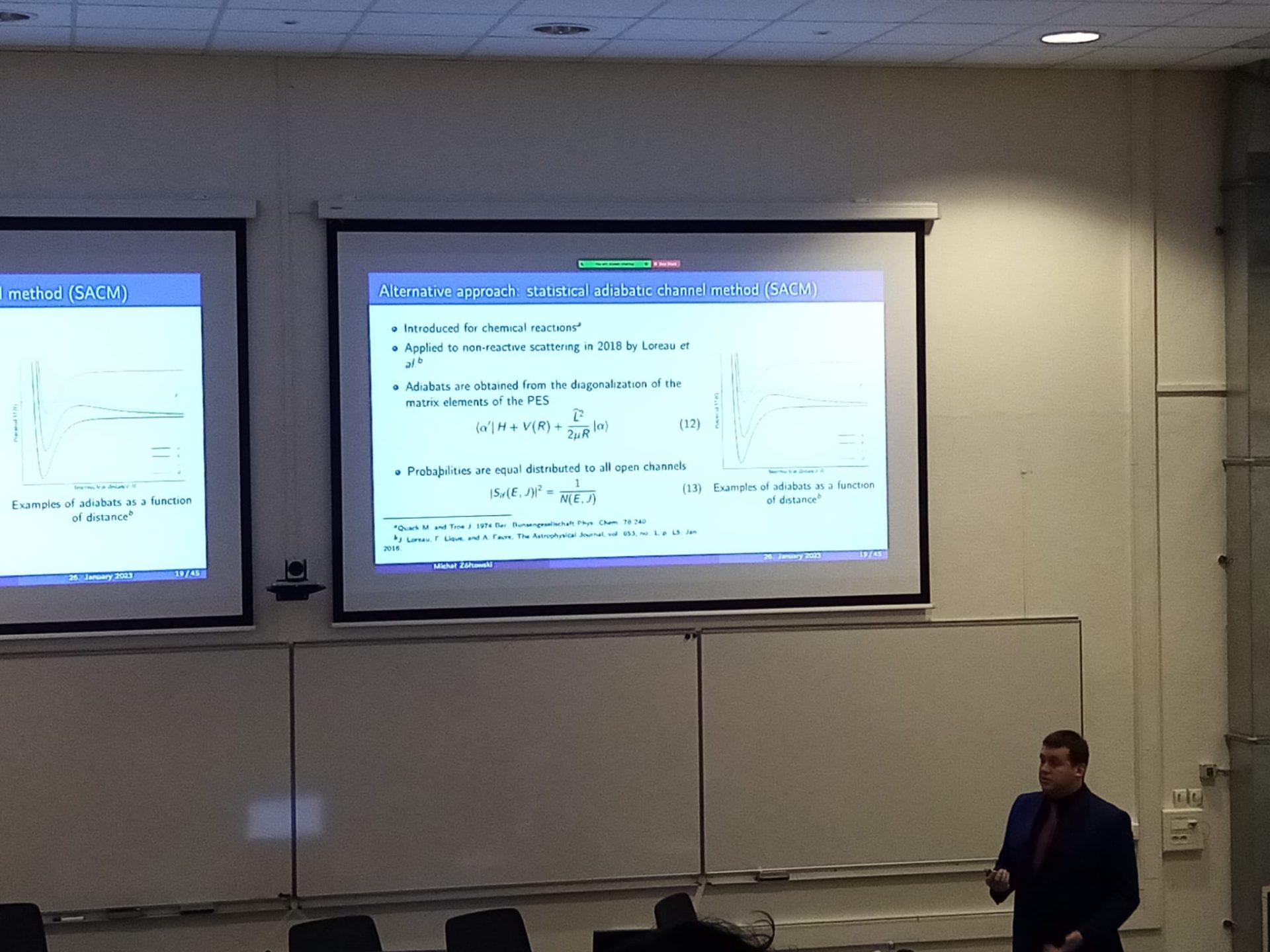by Michał Żółtowski, on
Michał Żółtowski thesis

Michał is now the 2nd member of the Collexism team to become PhD!
Michał's thesis started in October 2019 under the supervision of F. Lique, J. Loreau (Belgium) and P. Żuchowski (Poland) and ended on Thursday November 26th with a wonderful PhD defense.
The president of the jury was Ian Sims, Professor at the University of Rennes and researcher at the Institute of Physics of Rennes, France.
The examiners were:
- Alexandre Faure, researcher director at Grenoble Alpes University, France
- Nicolas Biver, researcher at Paris-Meudon Observatory, France
The rapporteurs were:
- Marie-Lise Dubernet, astronomer at Paris-Meudon observatory, France
- Paul Dagdigian, emeritus academy professor, Johns Hopkins University, USA
Agata Karska, researcher at Nicolaus Copernicus University of Toruń, was invited to the defense.
Thesis work
During his PhD, Michał Żółtowski worked on non-reactive collisions involving heavy molecules such as H2O and CO.
He had a particular interest in the CO-CO system, for which arise the problem of identical (and thus indistinguishable) molecules.
He published 5 scientific per-reviewed papers over the 3 years of his thesis, including 3 as the first author.
Michał will stay in the Collexism team until July 2023, and then sadly leave us to go to New Horizons ...

Collisional excitation of astrophysical molecules induced by H2O and CO molecules - M. Żółtowski

Abstract of the manuscript:
The accurate determination of physical and chemical conditions in astronomical media can often only be inferred by interpreting molecular spectra. Given the observational progresses afforded with for example the fully operating Atacama Large Millimeter Array telescope and the recently launched James Webb Space Telescope, astronomy enters its golden age, with new molecules detected at an exponential rate. Modeling their spectra requires however to know the population of energy levels of chemical species. Such quantity is easy to derive when the local thermodynamic equilibrium (LTE) is fulfilled. Unfortunately, for most of the astrophysical media, the density is so low that the LTE cannot be maintained. Thus, radiative and collisional properties of the observed molecular species become absolutely needed for interpreting the spectra. This is a real challenge: indeed, whereas radiative properties are characterized by Einstein coefficients, easily obtained through analytical formulas, collisional data are system-specific and much more complicated to obtain, notably because they can only be computed for small molecules (up to a few atoms) colliding with light partners such as hydrogen, helium, or hydrogen molecule. But in media like cometary or planetary atmospheres, the dominant colliders are "big" molecules, such as H2O, CO, etc. Systems with such heavy colliders are thus creating important methodological and theoretical difficulties for collisional studies.
This work focuses on assessing the extent to which already available techniques and methodologies can be optimized to treat these complicated systems. Our methodology was first tested on systems important for modeling the interstellar medium (H2O-H2 and its isotopologues), before addressing systems such as CO-CO, H2O-HNC, and H2O-HCN, which are crucial in better understanding cometary atmospheres. Given that no prospects of in situ missions are envisioned in such environments in near future, spectroscopic observations constitute the main access to them: hence the importance to estimate the level of accuracy of the collisional data that can be provided through these optimized methods.